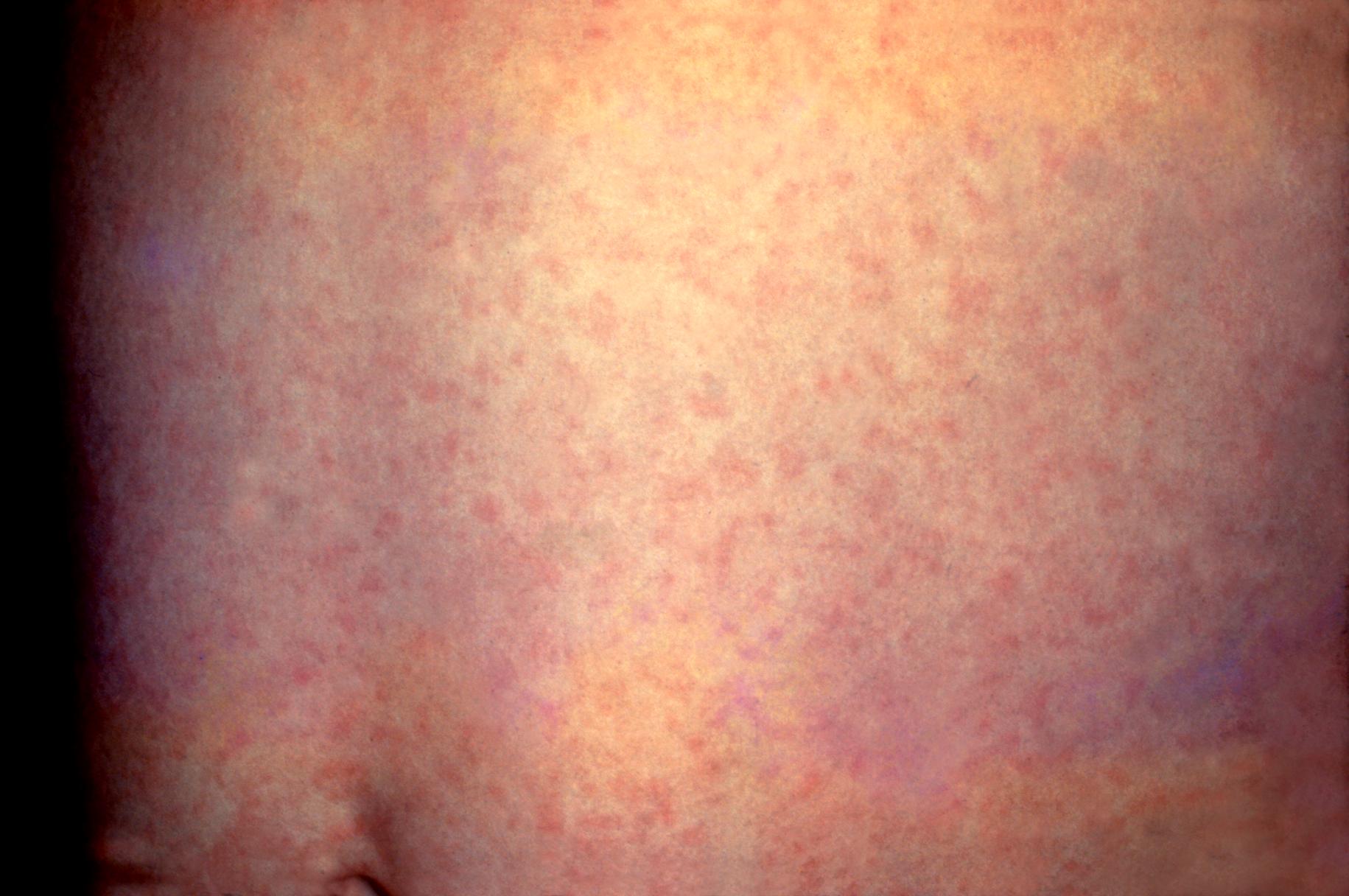Rubella: Symptoms, Causes, Treatment
What are the symptoms of rubella?
Rubella, also known as German measles, is a viral infection that causes a mild illness in most people but can be more serious for pregnant women and their babies. The symptoms of rubella typically appear between 2 to 3 weeks after exposure to the virus and may include:
- Rash: A rash is usually the first sign of rubella. It often starts on the face and then spreads to the rest of the body. The rash is typically pink or light red and consists of small, flat spots.
- Fever: A mild fever, typically less than 102°F (38.9°C), is common with rubella.
- Swollen lymph nodes: The lymph nodes, particularly those behind the ears and at the back of the head, may become swollen and tender.
- Joint pain: Some people with rubella may experience joint pain, especially in young women.
- Headache: Headaches are a common symptom of rubella.
- Runny or stuffy nose: Some people may have a runny or stuffy nose, similar to a cold.
- Conjunctivitis: Rubella can cause redness and irritation in the eyes.
In most cases, the symptoms of rubella are mild and resolve on their own within a week. However, rubella can be more serious for pregnant women, as it can cause birth defects in the baby if the mother is infected during pregnancy. It’s important for pregnant women to avoid contact with anyone who has rubella and to ensure they are immune to the virus through vaccination or previous infection.
What are the causes of rubella?
Rubella is caused by the rubella virus, which is a member of the Togaviridae family of viruses. The virus is transmitted from person to person through respiratory droplets when an infected person coughs or sneezes. The virus can also be spread by direct contact with respiratory secretions or by touching surfaces contaminated with the virus and then touching the face.
Rubella is most contagious when the infected person has a rash, but it can be spread from 7 days before the rash appears to 7 days after. People infected with rubella can spread the virus to others even if they do not have symptoms.
Rubella is a vaccine-preventable disease, and vaccination has led to a significant decline in the number of cases worldwide. The rubella vaccine is usually given as part of the measles, mumps, and rubella (MMR) vaccine, which is recommended for children and adults who are not immune to the virus. Vaccination not only protects individuals from rubella but also helps prevent the spread of the virus in the community.
What is the treatment for rubella?
There is no specific treatment for rubella, as it is a viral infection that typically resolves on its own within a week. Treatment for rubella is focused on relieving symptoms and preventing complications. Here are some common approaches to managing rubella:
- Rest: Getting plenty of rest can help the body fight off the infection and recover more quickly.
- Hydration: Drinking plenty of fluids can help prevent dehydration, especially if you have a fever.
- Fever reducers: Over-the-counter medications such as acetaminophen or ibuprofen can help reduce fever and relieve pain.
- Avoiding spreading the virus: Since rubella is highly contagious, it’s important to avoid close contact with others, especially pregnant women, until you are no longer contagious.
- Vaccination: The best way to prevent rubella is through vaccination. The rubella vaccine is usually given as part of the measles, mumps, and rubella (MMR) vaccine, which is recommended for children and adults who are not immune to the virus.
It’s important to consult with a healthcare provider if you suspect you have rubella, especially if you are pregnant or have a weakened immune system. A healthcare provider can help confirm the diagnosis and provide guidance on managing the infection. Pregnant women who are not immune to rubella should avoid contact with anyone who has the virus, as rubella infection during pregnancy can cause serious birth defects in the baby.




